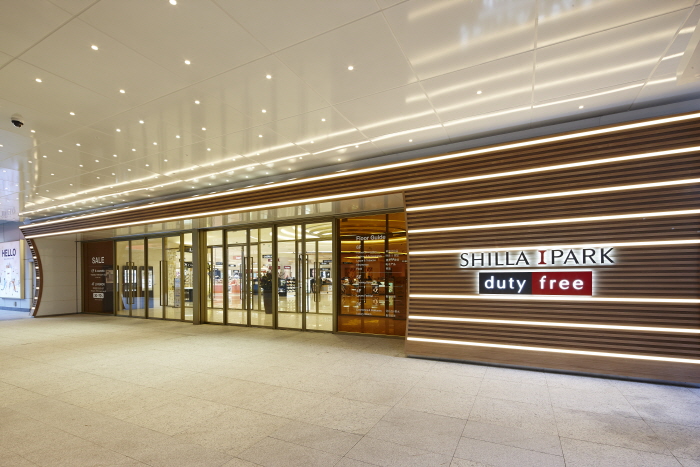Jeongneung Royal Tomb [UNESCO World Heritage] (서울 정릉(신덕왕후) [유네스코 세계문화유산])
4.5Km 2021-02-09
116, Arirang-ro 19-gil, Seongbuk-gu, Seoul
+82-2-914-5133
Jeongneung Royal Tomb is the tomb of Queen Sindeok, the second wife of King Taejo (1392-1398), founder of the Joseon dynasty (1392-1910). The queen met a sudden death due to health complications. Although one of her sons was the crown prince, he was killed by a successive brother, Yi Bang-won, in order to obtain the throne. After Yi Bang-won rose to the throne as King Taejong, he relocated Queen Sindeok's tomb to outside of the city walls.
Shilla I'Park Duty Free (신라아이파크면세점)
4.5Km 2022-01-28
55, Hangang-daero 23-gil, Yongsan-gu, Seoul
+82-1688-8800
Shilla I'Park Duty Free is located within Yongsan's I'Park Mall, offering multiple luxury and imported brands in fashion, cosmetics, food and more. Aiming to be a 'premium lifestyle shopping destination' for all domestic and international visitors, the store is connected to restaurants, electronic department, movie theater and other convenient facilities.
ER Shoopen - IPARK Mall Branch [Tax Refund Shop] (ER 슈펜 아이파크몰)
4.5Km 2024-04-19
2F, 55, Hangang-daero 23-gil, Yongsan-gu, Seoul
-
Nike - IPARK Mall Branch [Tax Refund Shop] (나이키 용산아이파크)
4.5Km 2024-04-23
6F, 55, Hangang-daero 23-gil, Yongsan-gu, Seoul
-
Zara - IPARK Mall Branch [Tax Refund Shop] (자라 아이파크몰)
4.5Km 2024-04-23
55, Hangang-daero 23-gil, Yongsan-gu, Seoul
-
It Michaa [Tax Refund Shop] (잇미샤)
4.5Km 2024-04-19
4F I’Park Mall, 55, Hangang-daero 23-gil, Yongsan-gu, Seoul
-
Hyundai IPARK Mall [Tax Refund Shop] (현대 아이파크몰)
4.5Km 2024-04-18
55, Hangang-daero 23-gil, Yongsan-gu, Seoul
-
IPARK Mall Clinic [Tax Refund Shop] (아이파크몰의원)
4.5Km 2024-04-18
(Hangang-ro 3-ga) I'Park Mall Living Hall 6th floor, 55, Hangang-daero 23-gil, Yongsan-gu, Seoul
-
Chicor - IPARK Mall Branch [Tax Refund Shop] (시코르 용산아이파크)
4.5Km 2024-06-27
3F, 55, Hangang-daero 23-gil, Yongsan-gu, Seoul
-
Olive Young - Yongsan I'Park Mall Branch [Tax Refund Shop] (올리브영 용산아이파크몰점)
4.5Km 2024-06-27
4F, 55, Hangang-daero 23-gil, Yongsan-gu, Seoul
-
![Jeongneung Royal Tomb [UNESCO World Heritage] (서울 정릉(신덕왕후) [유네스코 세계문화유산])](http://tong.visitkorea.or.kr/cms/resource/91/2622291_image2_1.jpg)

![ER Shoopen - IPARK Mall Branch [Tax Refund Shop] (ER 슈펜 아이파크몰)](http://tong.visitkorea.or.kr/cms/resource/76/2888676_image2_1.jpg)
![Nike - IPARK Mall Branch [Tax Refund Shop] (나이키 용산아이파크)](http://tong.visitkorea.or.kr/cms/resource/16/2889616_image2_1.jpg)
![Zara - IPARK Mall Branch [Tax Refund Shop] (자라 아이파크몰)](http://tong.visitkorea.or.kr/cms/resource/67/2889867_image2_1.jpg)
![It Michaa [Tax Refund Shop] (잇미샤)](http://tong.visitkorea.or.kr/cms/resource/25/2891025_image2_1.jpg)

![IPARK Mall Clinic [Tax Refund Shop] (아이파크몰의원)](http://tong.visitkorea.or.kr/cms/resource/21/2890621_image2_1.jpg)
![Chicor - IPARK Mall Branch [Tax Refund Shop] (시코르 용산아이파크)](http://tong.visitkorea.or.kr/cms/resource/67/3314267_image2_1.jpg)
 English
English
 한국어
한국어 日本語
日本語 中文(简体)
中文(简体) Deutsch
Deutsch Français
Français Español
Español Русский
Русский